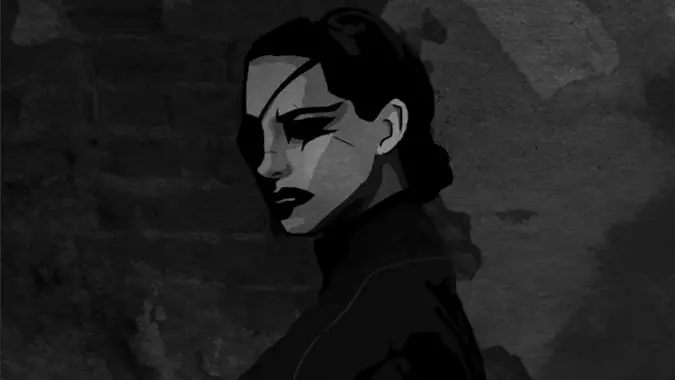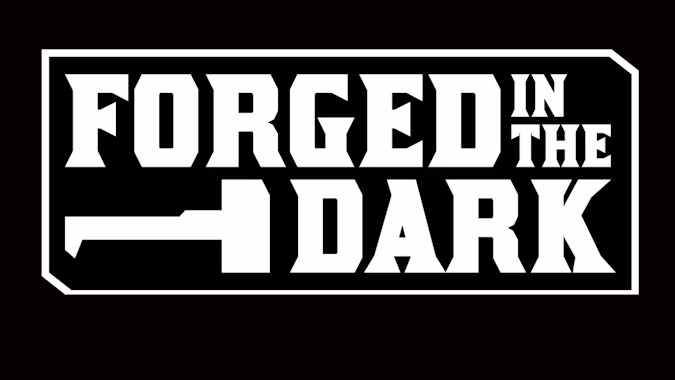Pull off daring heists in a dark fantasy city in Blades in the Dark

Stop me if you’ve heard any of these Tabletop RPG scenarios:
- You’ve gathered around your gaming table to play a gang of scrappy, daring scoundrels pulling off a daring heist in a fantastic environment, making a name for yourself in the city’s underworld, but your group keeps getting bogged down in the details of planning and never gets around to actually getting themselves into, and hopefully out of, trouble.
- You’re just tired of the standard old goblins and orcs and you’re interested in digging into where real villainy lies: other people. You don’t want to scrap with another horde of faceless mooks, you want a feud with a gang looking to take over the same turf.
- Maybe you’re just a forever GM who wants to play something where your players’ characters are actively encouraged to be proactive — pursuing their own goals and ends, whatever the means — as opposed to reactive — bad guy does thing, or good guy tells them to do thing, and they react.
If any or all of that sounds up your alley, you might want to check out Blades in the Dark, a tabletop RPG by John Harper. Blades is something of an indie darling — and one we’ve discussed here before, as well! — because it combines narrative gameplay, interesting and necessarily flawed characters, and high amounts of player agency with an extremely interesting dark fantasy setting, and rules that allow for sliding right past the boring parts of pulling off lucrative scores and getting to the entertaining bits. All you need to play is the core rulebook (available as a PDF from itch.io or Drive Thru RPG, or as a hardcover and PDF combo from Evil Hat Productions), the freely-downloadable character and crew sheets, and a handful of six-sided dice.

The city of Doskvol sets a mysterious, steampunk stage for a daring heist
In Blades in the Dark, you play a group of daring scoundrels building a criminal enterprise from the ground up in the haunted streets of the cold, foggy industrial-fantasy city of Doskvol, or Duskwall. Doskvol is something like a mashup of Venice, London, and Prague during the 1870s — think trains, steamboats, printing presses, simple electric technology, and the black smoke of chimneys. However, Doskvol is also situated in a world that has suffered a cataclysm that broke the Gates of Death and shattered the sun, unleashing vengeful ghosts from the deathlands into the world. The cities are kept safe by barriers of electrical towers, powered by electroplasmic blood from massive leviathans hunted in the void-dark sea. Basically: you’re trapped in a haunted Victorian-era city surrounded by a wall of lightning and powered by demon blood.
Naturally, such a thing means you can’t just leave town for a few days and wait for the heat to blow over when you step on another gang’s toes or come under surveillance by the Bluecoats. Instead, Duskwall is a pressure cooker of actions and consequences, where every action matters and everything you do can shift the balance of power in the city.
And who are you? The players are scoundrels who belong to a crew, a ragtag group of poor independents, trying to go from nobodies clawing for power to a serious criminal organization with established turf. Their roles include:
- Cutters: intimidating fighters, the muscle.
- Hounds: the crew’s sharpshooters and trackers.
- Leeches: tinkers, alchemists, saboteurs, and sometimes medics.
- Lurks: stealthy infiltrators. Get in, get out, do it unseen.
- Slides: the faces — manipulators and spies.
- Spiders: devious masterminds, pulling all the strings.
- Whispers: arcane adepts, but dealing with demons and ghosts can come at a price.
The crew is as much a character as the characters, in some ways, and what you are determines what you’re good at and what kind of things you want to explore with your group. It doesn’t mean it’s the only thing your crew can do, but if — say — you pick a group of assassins, you’re signaling that your crew is good at making people and problems disappear.
- Assassins are killers for hire. Need someone ransomed? Need a rival to have an “accident?” Call the assassins.
- Cults serve forgotten gods. Run your religious rites, with a smattering of hunting down artifacts that probably belong in a museum.
- Bravos are thugs and extortionists. Sabotage, smash and grab, take on other gangs directly.
- Hawkers sell illegal products. Covert sales, but also social events and shows of force.
- Smugglers transport contraband into and through the city. They’re the most likely to make the extremely dangerous trips outside of the city.
- Shadows are thieves and spies for hire. Burglaries, espionage, robbery — pretty much anything can fall under their purview.

Blades’ gameplay reduces tedium and maximizes action with — time travel?
During a score — one of the jobs your crew of ne’er-do-wells has signed themselves up for — Blades in the Dark uses pools of six-sided dice to solve the matter of dice rolling. Players decide what actions they want to use to accomplish a given task — these are a combination of skills and attributes, things like Study, Tinker, Prowl, Skirmish, Wreck, or Sway. The GM, taking into account three factors — the story thus far, what the players want to accomplish, and what action they want to use — sets the position (controlled, risky, or desperate) and effect (limited, standard, or great) for the roll; the position essentially describes how bad the blowback is going to be if you fail, while the effect dictates how much effect you can have pursuing your end with your chosen action. (Nothing in Blades in the Dark says you can’t try to Command a door’s lock to open, but it’s probably going to be limited effect at best.)
Once you’ve got that, gather up a number of dice equal to your action rating. You can optionally push yourself (taking stress, a bar that ticks up indicating your mental and physical stress) or get a Devil’s Bargain (where the GM just straight up tells you a thing that will happen — probably bad) for an extra die, and you can always get help from a crewmate as well at the cost of giving them stress. When your pool is all tallied up, roll all your d6s and check the highest number; 1-3 is a failure, 4-5 is a partial success, 6 is a full success, and multiple 6s is a critical success.
Should harm or other consequences come your way, you can always try to resist them in a similar way to rolling to begin with; the only cost is stress, but accumulating too much stress might mean your rogue has to flee the scene for now and return later somewhat traumatized. Accumulate too much trauma and retire — this street life just isn’t for you.
Other mechanics really serve to augment this simple action roll mechanic. For example: Blades encourages skipping right past the planning phase, which can really bog down a table as people get into endless discussions, and jumping into the action. How then can you establish, say, that you talked the district City Watch sergeant into canceling the Bluecoat patrol in the area your grouo’s going to be working tonight? This is where flashbacks come into play. Flashbacks are how Blades elides the boring talky part of heist planning while also allowing your characters to have those cool, “I totally planned for this” moments — the GM sets a stress cost (from 0 for something you clearly had the ability to do, to 2 for something incredibly specific and contingent for this mission) and you make a roll, like usual, since the game doesn’t distinguish between actions in the now and actions in flashbacks.
After the job is over, succeed or fail, the game moves into downtime. This is where your crew deals with the consequences of their actions, heals (or at least mitigates) their harm, executes long-term projects, and indulges in their vices to blow off stress to ensure they don’t run the risk of accumulating too much and getting trauma very early into the next mission. Perhaps just as importantly, they get the payoff from the score they hopefully just succeeded — and accumulate entanglements that can lead to the next one.

The Forged in the Dark has different genres for this framework
Maybe the fiction-focused approach of Blades appeals to you, but you’re just not looking to play dark fantasy thieves. That’s fine too — Blades has spawned a whole array of other games, under the “Forged in the Dark” label, that cover a whole variety of genres:
- Band of Blades documents a group of mercenaries in fighting retreat from an army of the undead — think Glen Cook’s Black Company novels combined with Wrath of the Lich King and you’ve got the idea.
- Girl by Moonlight is all of your favorite magical girl stories, running on the Forged in the Dark engine.
- Scum and Villainy has shades of both Firefly and Star Wars, and tells stories about a spaceship crew trying to make ends meet under the iron fist of a galactic empire.
- The Age of Blood and Gold is set when oceans have become battlefields, telling daring tales of piracy and high seas adventure.
- Beam Saber, one of my personal favorites, evokes mecha anime of all kinds — pilots in a war that’s too big for them to stop, trying to do their part, get out alive, and help others do the same.
- Brinkwood casts the players as rebels and renegades in an unlikely arrangement with the fae to depose the blood-sucking tyrants of the world. Literally, because the tyrants are vampires.
- While it is not strictly speaking a Forged in the Dark game, you’ll find a lot of the same ideas and some of its rules in the bones of Darrington Press’ Candela Obscura, as well.
And there’s many, many more — if you’ve got a genre of media you like, there’s very likely a Forged in the Dark game designed to play in that world.
Please consider supporting our Patreon!
Join the Discussion
Blizzard Watch is a safe space for all readers. By leaving comments on this site you agree to follow our commenting and community guidelines.
 @awaymessageclub
@awaymessageclub



